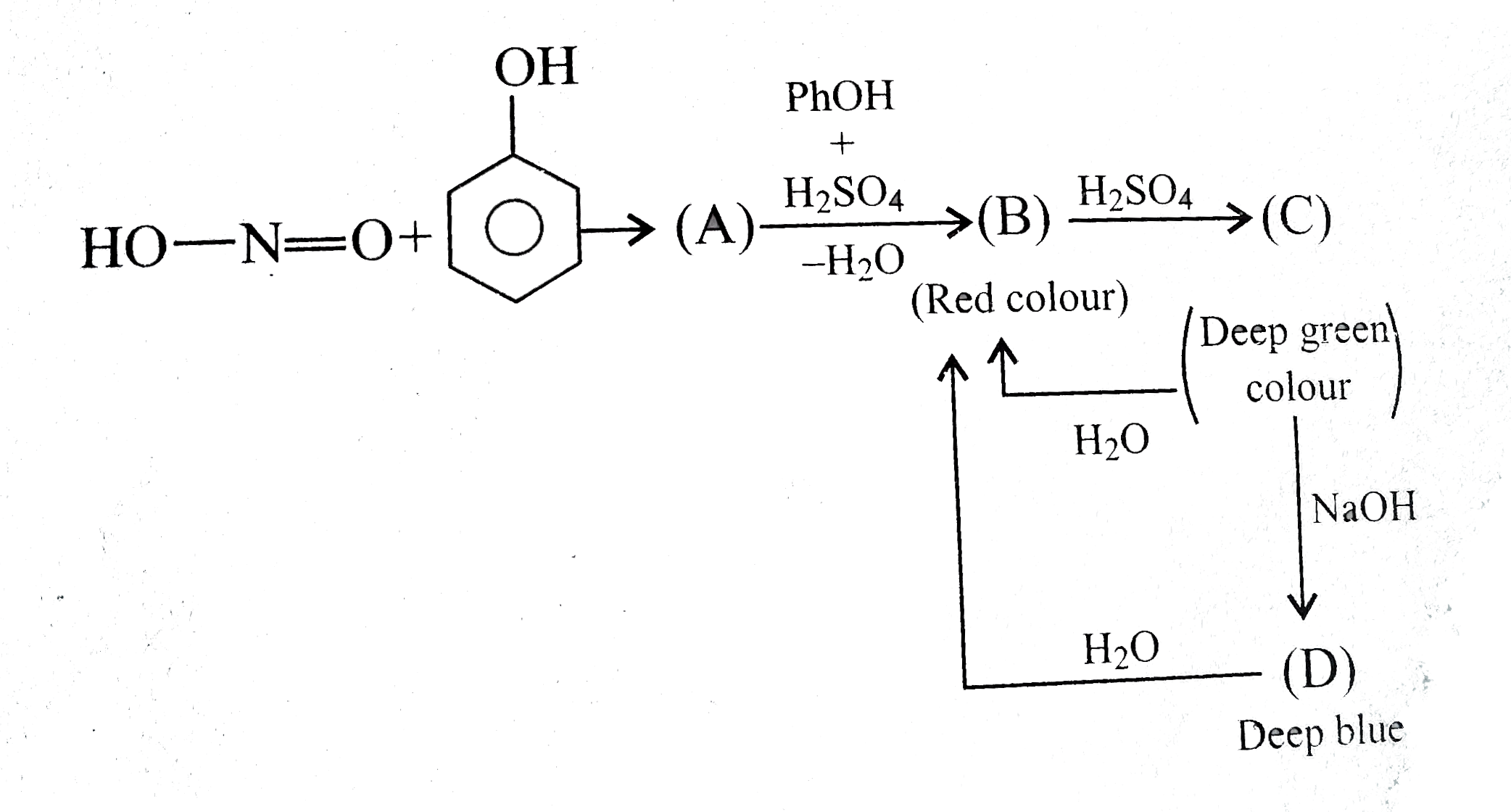Sodium metal on dissolution in liquid ammonia gives a deep blue solution due to the formation of :
sodamide
ammoniated electrons
sodium-ammonia complex
sodium ion-ammonia complex
To solve the question regarding the deep blue solution formed when sodium metal is dissolved in liquid ammonia, we can break down the process step by step:
Step 1: Understanding the Reaction
When sodium metal (Na) is added to liquid ammonia (NH₃), a chemical reaction occurs. Sodium donates its electrons to the ammonia molecules.
Step 2: Formation of Ammoniated Cations and Electrons
During the reaction, sodium ions (Na⁺) form ammoniated cations, while the electrons released from sodium become solvated or ammoniated electrons (e⁻). The reaction can be summarized as:
Na+NH3→Na+(ammoniated)+e−(ammoniated)
Step 3: Color Development
The deep blue color of the solution is primarily due to the presence of these solvated electrons. When these electrons are in the solution, they can absorb light in the visible spectrum, which leads to the characteristic blue color.
Step 4: Identifying the Correct Formation
From the options provided, we need to identify what causes the deep blue color. The key point is that the deep blue solution is due to the formation of ammoniated electrons, not the ammoniated cation or any complex. Therefore, the correct answer is:
Ammoniated electrons (solvated electrons).
Conclusion
The deep blue solution formed when sodium metal is dissolved in liquid ammonia is due to the formation of ammoniated electrons.
---
When sodium metal (Na) is added to liquid ammonia (NH₃), a chemical reaction occurs. Sodium donates its electrons to the ammonia molecules.
During the reaction, sodium ions (Na⁺) form ammoniated cations, while the electrons released from sodium become solvated or ammoniated electrons (e⁻). The reaction can be summarized as:
Na+NH3→Na+(ammoniated)+e−(ammoniated)
The deep blue color of the solution is primarily due to the presence of these solvated electrons. When these electrons are in the solution, they can absorb light in the visible spectrum, which leads to the characteristic blue color.
From the options provided, we need to identify what causes the deep blue color. The key point is that the deep blue solution is due to the formation of ammoniated electrons, not the ammoniated cation or any complex. Therefore, the correct answer is:
Ammoniated electrons (solvated electrons).
The deep blue solution formed when sodium metal is dissolved in liquid ammonia is due to the formation of ammoniated electrons.
Similar Questions
Knowledge Check
Sodium metal dissolves in liquid ammonia and forms a deep blue solution. The colour is due to absorption of light by :
Asodium ionsBammoniated electronsCfree electronsDammoniated sodium ionsA solution of sodium in liquid ammonia is blue in colour due to:
AThe presence of ions Na+BThe presence of ammoniated electronCThe formation of NaNH2DThe formation of sodium hydrideThe metal that dissolves in liquid ammonia, giving a dark blue coloured solution is
ATinBLeadCSodiumDSilver
With which metal ion, aqueous ammonia reacts to give a deep blue solution?
View SolutionStatement 1 : Sodium metal dissolves in liquid ammonia to form a blue coloured solution.
Statement 2 : The blue solution is a good conductor of electricity.
View SolutionPotassium dichromate acts as a strong oxidising agent in the acidic medium. When heated with a metal chloride and conc. sulphuric acid, it gives orange red fumes. On passing these fumes through sodium hydroxide, it gives a yellow solution (X) and this acidified solution gives yellow precipitate (Y) with lead acetate. On heating potassium dichromate with KOH, it forms a yellow solution (Z) which on acidification changes to orange colour. Acidified solution of dichromate ion gives deep blue colour with H2O2 due to the formation of (P)
The blue colour of compound P fades due to the formation of
View SolutionFe+3 ions in an aqueous solution gives deep red colouration with both sodium acetate (in excess) and ammonium thiocyanate (slightly acidic). The deep red colouration obtained with ammonium thiocyanate gets decolourised on addition of a solution containing F− ions.
The deep red colouration is due to the formation of:
View SolutionPotassium dichromate acts as a strong oxidising agent in the acidic medium. When heated with a metal chloride and conc. sulphuric acid, it gives orange red fumes. On passing these fumes through sodium hydroxide, it gives a yellow solution (X) and this acidified solution gives yellow precipitate (Y) with lead acetate. On heating potassium dichromate with KOH, it forms a yellow solution (Z) which on acidification changes to orange colour. Acidified solution of dichromate ion gives deep blue colour with H2O2 due to the formation of (P)
The orange red fumes obtained on heating potassium dichromate with a metal chloride and conc. H2SO4 is due to the formation of
View Solution

